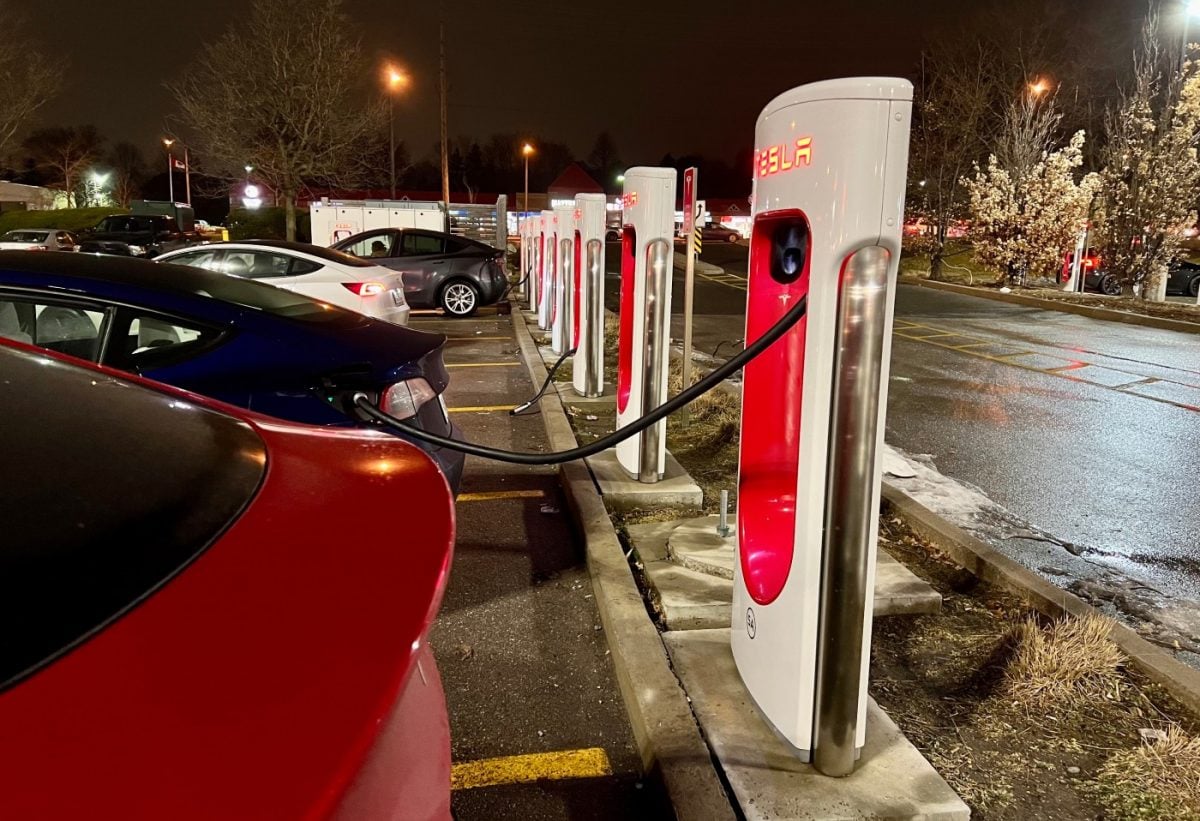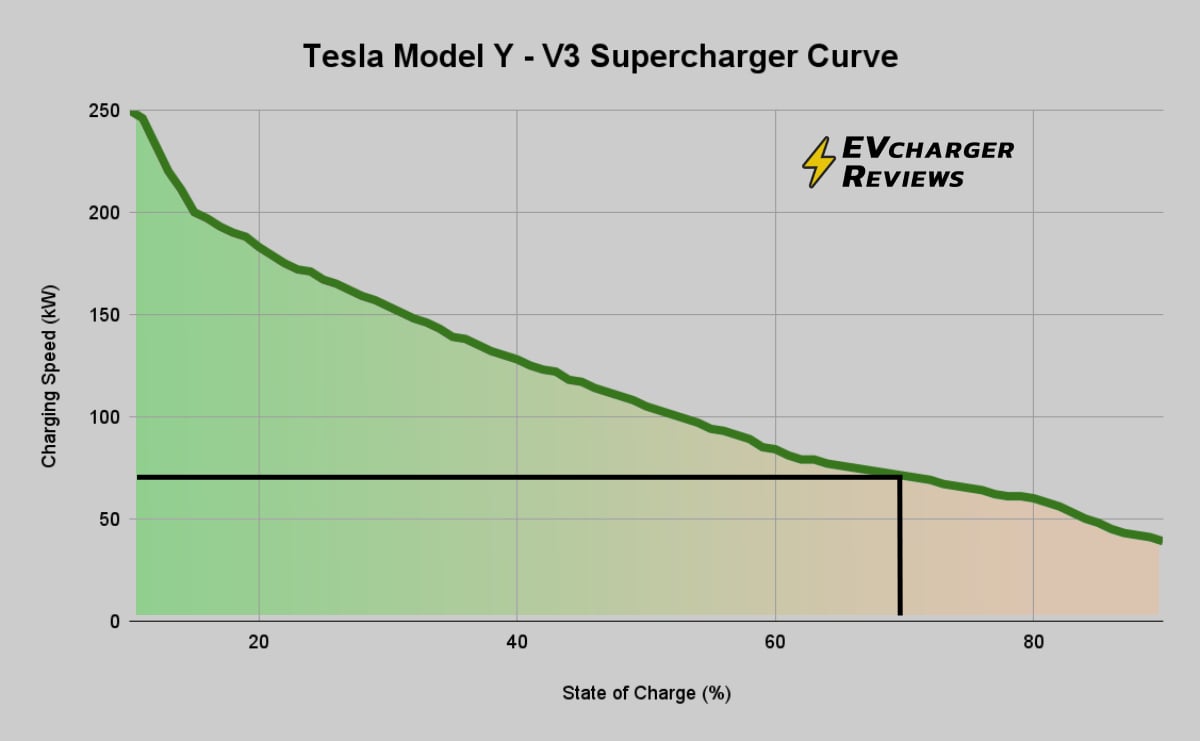EV charging stops are different from gasoline fueling stops. While we can’t top up a tank in 5 minutes, an EV driver can recover a very significant portion of their total range during a 15 minute stop, with some preparation. When we describe efficient charging station stops we mean time efficient and cost efficient, because many EV charging stations will bill you by the minute of utilization.
What is a Charging Curve?
The Charging Curve describes the relationship between the charging speed and the battery state of charge (battery percentage). Batteries are able to accept the fastest charging speeds when they are nearly empty, and the charging power in kW is gradually reduced. The top 20% of all EV batteries take the longest to charge.
We recorded and plotted a Tesla Model Y charging curve in the lead image. In our example above, the Model Y is able to briefly reach 250 kW at 10%, which tappers down to 70 kW at 70%, and down to around 30 kW at 90%.
How to make the most of charging station stop
- Plan your trips so you arrive at a charging station with 10-20% remaining, so the battery can charge at the fastest possible rates during your session.
- Arrive at the charging station with a preconditioned and warm battery pack. If the battery is not at an optimal temperature it will not reach peak charging speeds. In a Tesla, navigating to a Supercharger will automatically precondition the battery. Other EVs commonly have controls for manually preconditioning the battery. Begin preconditioning 15-20 minutes prior to charging. This is especially important in colder winter weather.
- As the charging curve suggests, the top 20-30% of the battery charges at a much slower rate than the bottom percentages. To be most time efficient on road trips, try to drive down the battery to 10% and charge back up to 70% at charging stations. This 60 percent band of the battery charges quickly and offers plenty of range to cover distances between restroom/food breaks. By using the bottom portion of the battery, your average charging rate (in kW) will be higher.
It took us about 23 minutes at a V3 Supercharger to go from 10% to 70%, which should be sufficient to cover at least another ~160 miles to the next station with some safety margin.

Related
How to Maximize EV Range in Cold Winter Months
How Much Battery Degradation is There After 30k Miles of Supercharging?
Considering buying a Tesla? Use our referral link to get $1,000 off, and help support our content.
